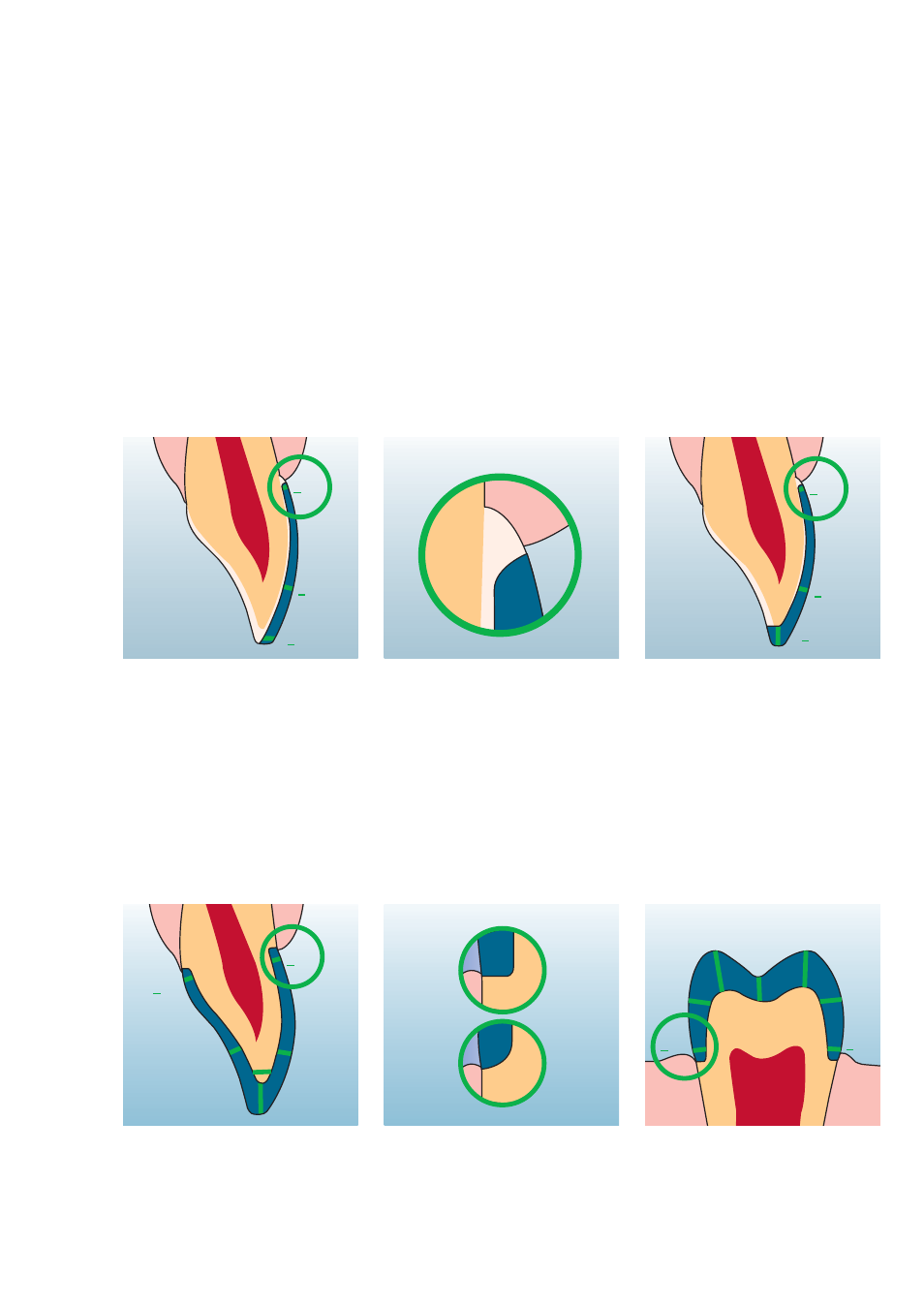Ivoclar Vivadent IPS Empress CAD Chairside - de-en-es-it-ru User Manual
Page 60

12
Veneers
If possible, the preparation should be entirely located in the enamel. The incisal preparation margins should not be located
in the area of the abrasion surfaces or dynamic occlusal surfaces. By preparing orientation grooves using a depth marker,
controlled enamel reduction can be achieved. Opening of the proximal contacts is not required.
For preparations without involving of the incisal edge (only labial reduction), the preparation depth in the cervical
area should be at least 0.6 mm and at least 0.7 mm in the labial area.
For preparation reduction of the incisal edge (labial/incisal reduction), the preparation depth in the cervical area should
be at least 0.6 mm, and at least 0.7 mm in the labial area. The incisal edge must be reduced by 1.0 mm. The extent of the
incisal reduction depends on the desired translucency of the incisal area to be built up. The more transparent the incisal
edge of the intended veneer, the more pronounced the reduction should be. Discoloured teeth may require more
preparation.
Anterior and posterior crowns
The anatomical shape is evenly reduced while observing the given minimum thicknesses. A circumferential shoulder is
prepared with rounded inner edges or a chamfer. The width of the circular shoulder should be at least 1 mm. The
incisal/occlusal third is reduced by 2 mm. For anterior crowns, the labial and/or palatal/lingual part of the tooth should be
reduced by at least 1.5 mm. The incisal width of the preparation should measure at least 1 mm (milling tool geometry) in
order to permit optimum milling of the incisal edge during CAD/CAM processing.
> 0.6
>0.7
>0.7
> 0.6
>1.0
>1.0
2.0
>1.0
1.5
1.5
>1.0
1.0
1.5
2.0
2.0
1.5
>1.0
>1.0
1.5
